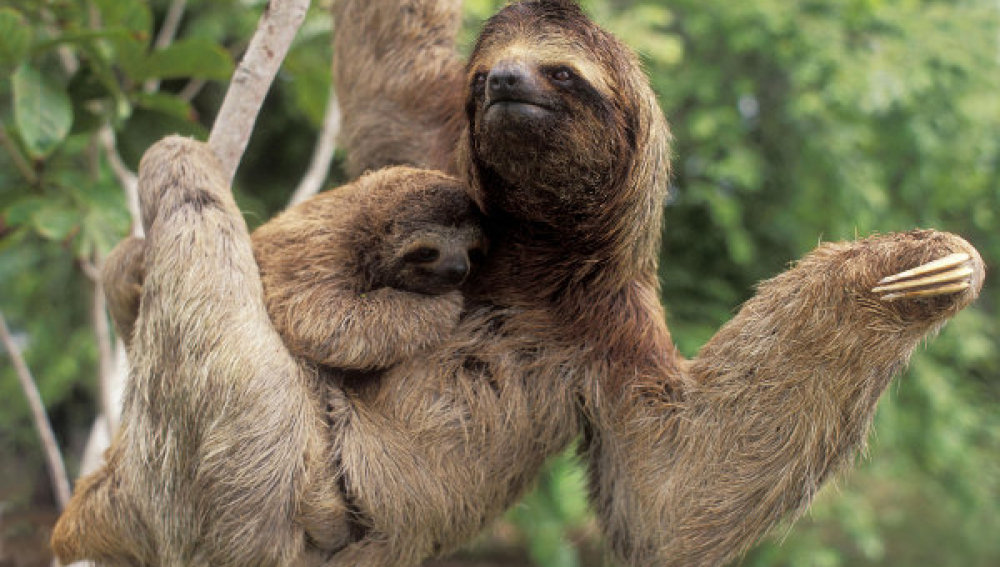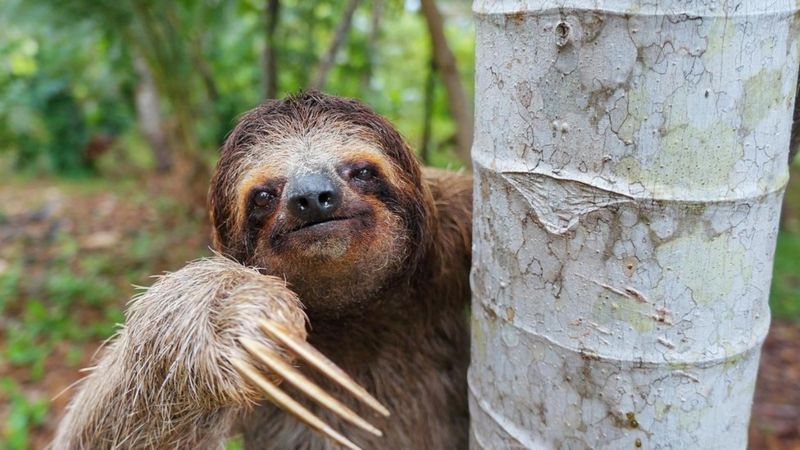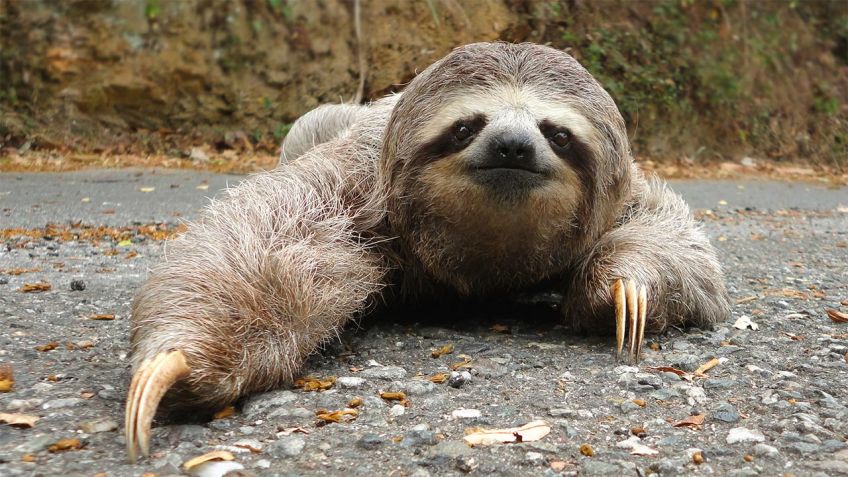
They are remarkable creatures that inhabit the tropical forests of Central and South America. Despite their name, these mammals are not related to true bears. In this article, we’ll explore some curiosities about sloths, their unique adaptations, and how they’ve become iconic characters of the region’s wildlife.
The Slow Pace of Sloths
One of the most prominent features of sloths is their extremely slow pace of life. They spend most of their time hanging from tree branches, moving with surprising tranquility. This strategy allows them to conserve energy and adapt to the forest environment.
The importance of fur in sloths
The fur of sloths is another distinctive feature. Their long, bushy hair serves as a refuge for a host of organisms, such as algae and lichens, which benefit from the symbiotic relationship with sloths. These organisms bring green hues to the fur of sloths, effectively camouflaging them among vegetation.

Special Adaptations
They are highly adapted for arboreal life. Their forelimbs are long and strong, allowing them to latch on to branches with ease. In addition, they have curved and sharp claws that they use to hang from branches and move slowly. These claws are also useful for feeding.
An exclusive diet
Feeding sloths consists mainly of leaves, shoots and fruits. Despite their exclusive diet of vegetables, their digestive system has evolved to digest cellulose, a component difficult to process. Thanks to their long fermentation chamber, sloths can extract nutrients from the fibrous foods they consume.

The importance of trees for sloths
They have a symbiotic relationship with trees, as they provide food and shelter. Their ability to move from tree to tree gives them a great advantage, as they avoid most terrestrial predators. In addition, their fur acts as a means of seed dispersal, thus contributing to the regeneration of forests.
Sloth Conservation and Threats
Although sloths have managed to adapt to their environment, they face challenges in terms of conservation. Habitat loss due to deforestation and poaching are some of the main threats they face. Several conservation efforts are underway to protect these animals and ensure the preservation of their natural habitat.

Conclusion
Sloths are a fascinating species that have developed amazing adaptations to survive in tropical forests. Their slow pace of life, unique fur and symbiotic relationship with trees make them unique creatures. Although they face challenges in terms of conservation, it is essential to take measures to protect these animals and their habitat. Their preservation is essential to maintain the biodiversity of forest ecosystems in Central and South America.








